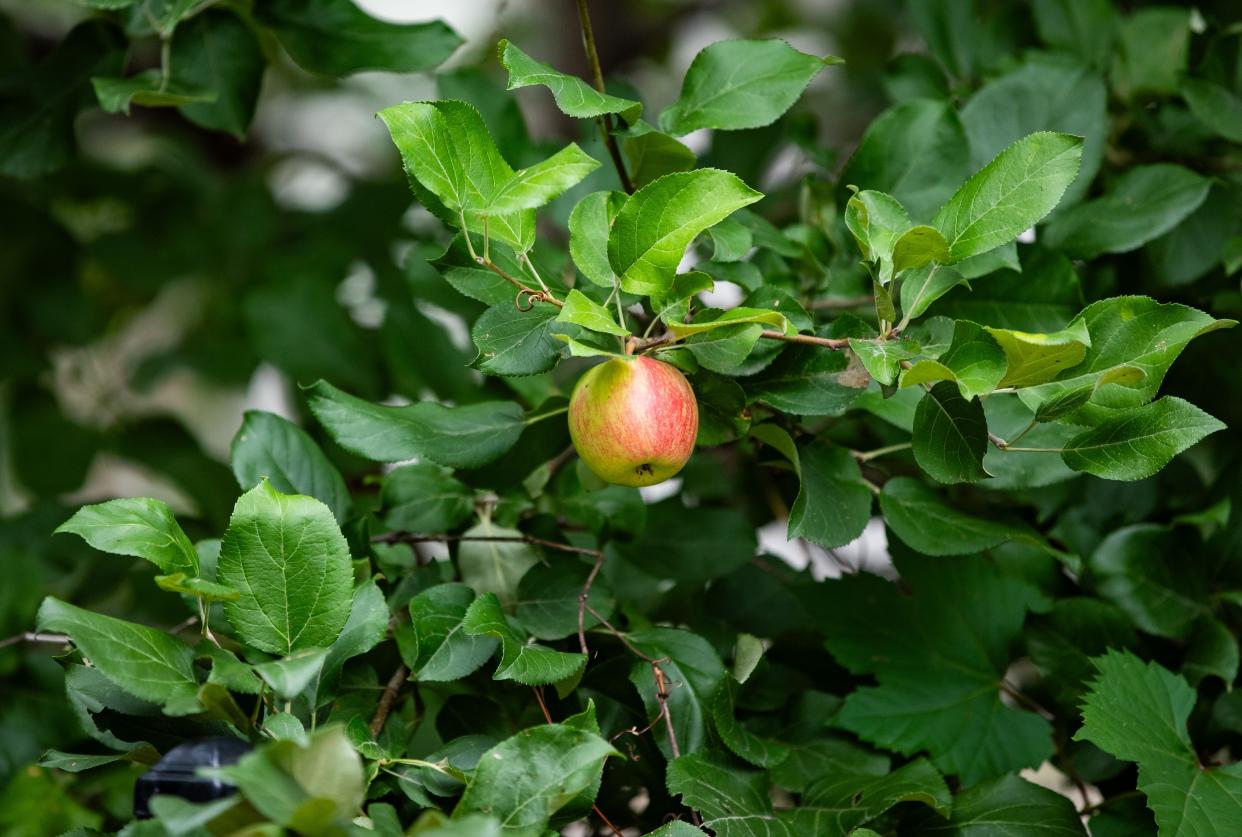How planting apple seeds affects the variety of fruit we harvest

Suppose you start your own apple orchard on the cheap.
You harvest the seeds from a single apple that you love and plant them in the ground. Next spring, six apple tree seedlings come up — success! A few years later, your six apple trees start to produce fruit. This is where things get strange.
All the trees came from seeds from the very same apple. However, one tree is producing fruit the size of olives. Another tree is producing larger fruit, but they are pointed like cones. One tree has apples that are spicy; one has fruit that tastes like licorice; and the other four plants have fruit so sour that you immediately spit it out.
What happened?
The origins of apple trees
Scientists pretty much agree that the apple tree evolved about 60 million years ago in what is now the region where Kazakhstan sits.
Like many other plants, the apple trees produced seeds surrounded by fruit. The sole purpose of the fruit was to attract animals that ate the fruit and spread their seeds, so new offspring can grow. The apples of our first apple trees were only the size of cherries. This went on for millions of years.
Over time, the size of the apples grew larger. Trees do not just decide to create larger fruit — it is all genetic and, for some reason, apple trees evolved to favor larger fruit.
Most small fruit seeds are spread by birds. The berries are swallowed, and the seeds come out the other end unharmed and in a new place. However, about the same time the apples started getting larger, the apples also evolved to have an arsenic-containing chemical around the seeds. Birds hated it.
Therefore, the spread of the apple tree was slow, as most of the seeds just dropped near the original apple tree.
Then came the bear. Bears started eating the apples. They ate small ones and large ones.
However, small apples tended to be swallowed whole. The digestive system did not release the apple seeds from their protective layer and the seeds did not sprout as often. Larger apples had to be chewed by the bear.
This separated the seeds from their protective layer and, therefore, seeds from larger apples started spreading farther and more often.
Extreme variability
Now back to our six very different apple trees.
You know that you don’t look exactly like your parents. You have some traits of each, but you look like your own person. This is because both your parents gave you a combination of traits that combine, both specifically and randomly, to create a unique you.
Apples do this too, but in an extreme way. Apples are constantly shuffling their genetics and this extreme shuffling produces a constantly changing final product. Scientists call this extreme heterozygosity.
There is an evolutionary advantage to this. Plants that produce nearly identical copies of themselves become vulnerable if a certain disease or pest evolves to attack it. This has happened to a variety of trees in the United States, and as a result the entire tree species may be wiped out.
In apples, the extreme variability means that a pest or disease will have a really hard time keeping up with the changes in the apple trees. The pests might get some apple trees, but others might be different enough to resist the problem. Thus, the apple tree lives on.
This explains the problem with the Johnny Appleseed story. He (John Chapman) indeed planted thousands of apple seeds, but few if any of the trees produced edible apples. Those apples were all for making hard apple cider.
So how do we get our golden delicious, red delicious, or whatever apple you love? They all came from the same tree! Most apple varieties we love developed naturally by chance. But planting the seeds from those apples would not produce the same apple.
Instead, small branches (called grafts) are cut from the tree we like and almost surgically inserted into the trunk of another apple tree. That tree becomes the host to the apple from the graft. Therefore, every red delicious apple came from one original tree that has been cloned many thousands of times.
Mike Szydlowski is a science teacher and zoo facilitator at Jefferson STEAM School.
TIME FOR A POP QUIZ
Why don’t you look exactly like your parents?
If you plant apple seeds, what will you get?
What is wrong about the Johnny Appleseed story told in schools and films?
What advantage do apple trees have over many other plants?
How do scientists produce a particular type of apple over and over again?
LAST WEEK'S QUIZ ANSWERS
What parts of the Johnny Appleseed story are true?
Although for different reasons, Johnny Appleseed was a good guy that planted apple seeds by the thousands.
What parts of the Johnny Appleseed story are not true?
Johnny Appleseed did not really go around randomly planting apple seeds so that everyone could enjoy delicious apples. He did not wear a pot for a hat.
Why did John Chapman really plant so many apple seeds?
The apple seeds were meant to produce trees he could sell to settlers to fulfill a government requirement that they improve the land in some way in order to keep it.
How were the apples planted by John Chapman different than the apples you buy at the store?
The apples produced by John Chapman’s trees were not meant for eating and tasted horrible. They were only meant for making hard apple cider.
Why do you think John Chapman was so appreciated by people during his time?
John Chapman made it very easy for settlers to claim land by providing apple trees to have a ready-made orchard on the land. This allowed them to claim the land as theirs forever.
This article originally appeared on Columbia Daily Tribune: How planting apple seeds affects the variety of fruit we harvest

